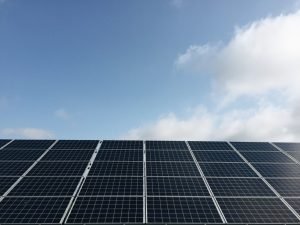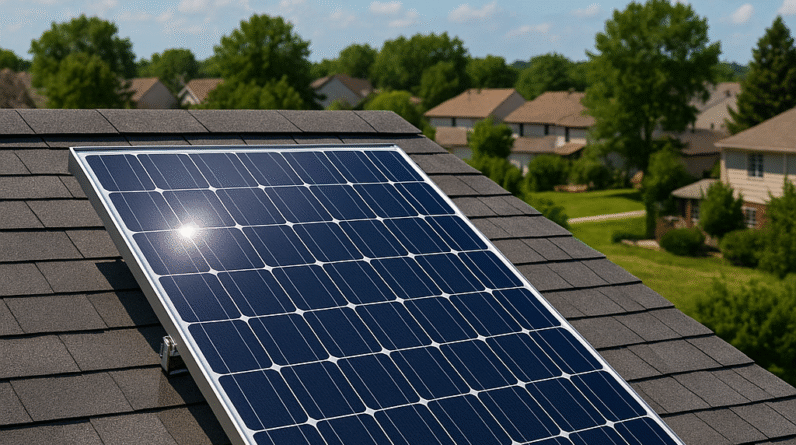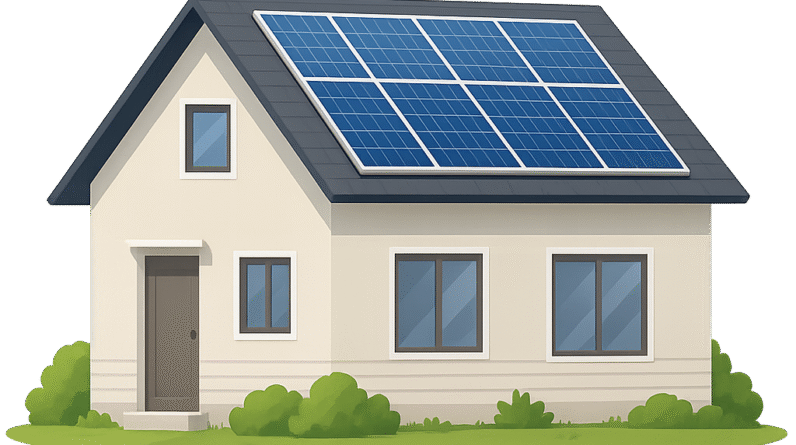
How Long Does It Take Solar Panels To Pay For Themselves?
How Long Does It Take Solar Panels To Pay For Themselves? Have you ever wondered how long it takes for solar panels to pay for themselves? With the rise in renewable energy sources and the increasing popularity of solar panels, many homeowners are considering making the switch. In this article, we’ll explore the financial aspects of installing solar panels and determine just how long it takes for these eco-friendly devices to start paying back their initial cost. So, if you’ve been contemplating going solar, keep reading to find out how soon you can start enjoying the benefits of a more sustainable and cost-effective energy solution.
Factors Affecting Payback Period
Initial Cost of Installation
The initial cost of installing a solar panel system is one of the main factors that impact the payback period. The cost varies depending on the size of the system, the type of solar panels used, and additional equipment required for installation. Generally, residential systems have a lower initial cost compared to commercial systems due to the difference in size and complexity. It is important to carefully evaluate the initial cost of installation as it directly affects how long it takes for the system to pay for itself.
Government Incentives and Tax Credits
Government incentives and tax credits play a significant role in determining the payback period of solar panels. Many governments offer financial incentives, such as grants or subsidies, to encourage the adoption of solar energy. Additionally, tax credits can greatly reduce the cost of installation. These incentives and tax credits vary by country and region, so it is important to research and take advantage of the available opportunities to shorten the payback period.

Energy Usage and Savings
The amount of energy consumed and the potential savings from solar panels are crucial factors in determining the payback period. Generally, the more electricity a household or business consumes, the shorter the payback period will be. Solar panels generate electricity, which offsets the need to purchase electricity from the grid. By producing your own energy, you can
reduce or even eliminate your monthly electricity bill, leading to substantial savings over time.
Electricity Rates
The cost of electricity from the grid, often referred to as electricity rates, impacts the payback period of solar panels. Higher electricity rates mean greater savings when using solar energy to offset your consumption. If you live in an area with high electricity rates, the payback period for your solar panel system will be shorter compared to areas with lower rates. It is important to consider this factor when deciding whether solar panels are a viable investment for your specific location.
System Performance and Maintenance
The performance and maintenance of the solar panel system also affect the payback period. High-quality solar panels and equipment generally have a longer lifespan and require less maintenance, resulting in better performance and longer savings. Regular maintenance and cleaning are essential to ensure optimal performance and maximize the energy production of your solar panel system. By investing in high-quality components and adhering to a proper maintenance routine, you can enhance the overall performance and shorten the payback period.
Financing Options
The financing method chosen for installing solar panels can impact the payback period. Different financing options, such as upfront cash payments, loans, leases, or power purchase agreements (PPAs), have varying terms, interest rates, and payment structures. It is recommended to carefully evaluate and compare the financing options available to determine which one suits your financial situation and goals best. Additionally, some financing options may be eligible for specific incentives or tax credits, further reducing the payback period.
Geographical Location

The geographical location of a solar panel system can affect its payback period due to the differences in sunlight availability and intensity. Areas with abundant sunlight and a higher solar resource potential generally have shorter payback periods. For example, solar panel systems installed in sunny regions like Southern California tend to generate more electricity and offset more energy consumption, leading to a quicker payback period. On the other hand, locations with less sunlight may have longer payback periods due to reduced energy production.
Orientation and Tilt of Solar Panels
The orientation and tilt of solar panels can significantly impact their energy production and, consequently, the payback period. Ideally, solar panels should be installed facing south in the Northern Hemisphere and north in the Southern Hemisphere to capture the maximum amount of sunlight throughout the day. Additionally, the tilt angle should be optimized based on the latitude of the installation site. Proper orientation and tilt increase the efficiency of solar panels, resulting in more energy generation and shorter payback periods.
Shading and Obstructions
Shading and obstructions can adversely affect the performance of solar panels, potentially prolonging the payback period. Shadows from nearby buildings, trees, or other objects can partially or completely block sunlight, reducing the energy production of the system. It is crucial to carefully assess the location of the solar panel installation site to minimize shading and obstructions. By ensuring that your solar panels receive maximum sunlight exposure, you can optimize their performance and achieve a quicker payback period.
Quality and Efficiency of Solar Panels
The quality and efficiency of solar panels influence the payback period. Higher-quality panels tend to have better performance, longer lifespans, and higher energy production, resulting in shorter payback periods. Efficiency is an essential factor to consider when selecting solar panels since more efficient panels convert a higher percentage of sunlight into electricity. By investing in high-quality and efficient solar panels, you can maximize the energy generation and accelerate the payback period of your system.
Simple Payback Method
The simple payback method is a straightforward way to calculate the payback period of solar panels. It is determined by dividing the initial cost of installation by the annual savings generated by the system. This method provides a general estimate of how long it will take for the system to pay for itself but does not take into account any financial considerations such as inflation or interest rates. The formula for the simple payback period is:
Payback period = Initial cost of installation / Annual savings
Net Present Value Method
The net present value (NPV) method is a more comprehensive approach to calculating the payback period. It considers the time value of money and accounts for the future cash flows generated by the solar panel system. The NPV method discounts the future cash flows, including savings and costs, to their present value and sums them up. A positive NPV indicates that the system will pay for itself within a specific time frame. This method provides a more accurate assessment of the financial viability of the solar panel system.

Return on Investment Method
The return on investment (ROI) method measures the profitability of the solar panel system over its lifetime by comparing the cumulative savings to the initial cost of installation. It calculates the percentage return on the initial investment, taking into account the time value of money. The ROI method provides a straightforward way to evaluate the financial performance of the system and determine how long it will take to recoup the initial investment.
Average Payback Periods
The average payback period for residential solar systems ranges from 6 to 12 years. The variation in payback period is influenced by factors such as initial cost, energy usage, electricity rates, available incentives, and system performance. In areas with high electricity rates and generous incentives, the payback period tends to be on the lower end of the range. Additionally, residential systems that generate more energy than is consumed can have even shorter payback periods, potentially reaching 5 years or less.
Commercial Solar Systems
Commercial solar systems generally have a longer payback period compared to residential systems due to their larger size, higher initial cost, and complex installation requirements. The average payback period for commercial solar systems can range from 8 to 15 years. However, factors such as energy consumption, electricity rates, available incentives, and the financial structure of the project can significantly influence the payback period. By carefully analyzing these factors and implementing energy-saving measures, businesses can potentially shorten the payback period of their commercial solar systems.
Case Studies and Examples
Example 1: Residential Solar System in California
A residential solar system in California with an initial cost of $20,000 and an average annual energy savings of $2,500 would have a simple payback period of 8 years (20,000 / 2,500). Taking into account available incentives and tax credits, along with the net present value and return on investment methods, the system may pay for itself even faster.
Example 2: Commercial Solar System in New York
A commercial solar system in New York with an initial cost of $150,000 and an average annual energy savings of $18,000 may have a payback period of 8.3 years (150,000 / 18,000). By exploring financing options, such as loans or leases, and considering tax credits and incentives, the payback period can potentially be shortened.
Example 3: Off-Grid Solar System in a Rural Area
In a rural area without access to the grid, an off-grid solar system with an initial cost of $10,000 and significant annual energy savings, eliminating the need for diesel generators, may have a payback period of 5 years or less. The absence of monthly electricity bills and the reduced reliance on alternative energy sources contribute to a quicker payback period.

Tips to Shorten Payback Period
Take Advantage of Incentives and Tax Credits
Research and identify the available incentives and tax credits offered by the government or local authorities. These financial incentives can significantly reduce the initial cost of installation and shorten the payback period of the solar panel system.
Implement energy-efficient practices and technologies to reduce overall energy consumption. By optimizing energy usage within your home or business, you can lower your reliance on the grid and maximize the energy generated by your solar panel system, resulting in faster payback periods.
Consider Lease or Power Purchase Agreement
Exploring lease or power purchase agreement (PPA) options can be an attractive solution for those looking to install solar panels without upfront costs. These agreements allow you to utilize solar energy while paying a fixed monthly fee. Although you may not own the system, the savings generated can contribute to a quicker payback period.
Research and Compare Pricing
Take the time to research and compare prices from different solar panel installers. By obtaining quotes from multiple providers and comparing the costs, you can ensure that you are getting the best value for your investment. It is important to consider not only the initial cost but also the product quality, warranties, and additional services offered.
Look for Solar Panel Financing Options
Investigate different financing options such as solar panel loans or green energy loans. These options allow you to spread the initial cost of installation over a longer period, making solar panel installation more affordable and potentially shortening the payback period.
Conclusion
The payback period of solar panels is influenced by various factors such as the initial cost of installation, government incentives, energy usage, electricity rates, system performance, financing options, geographical location, panel orientation, shading, and panel quality. Calculating the payback period using methods like simple payback, net present value, and return on investment provides valuable insight into the financial viability of solar panel systems. On average, residential solar systems have payback periods ranging from 6 to 12 years, while commercial systems have payback periods of 8 to 15 years. By considering tips such as taking advantage of incentives, maximizing energy efficiency, exploring leasing options, researching pricing, and investigating financing options, individuals and businesses can potentially shorten the payback period and enjoy the financial benefits of solar panels sooner.







